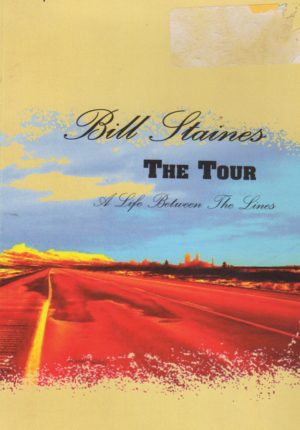
Bill Staines is as close as you’re going to come to seeing the great minstrels of old like Woody Guthrie and Burl Ives. His songs resonate years after being penned and his voice harkens back to a prior age of folk music. I’ve met Bill twice. The first occasion saw me teaching a course on self-publishing and Bill teaching a course on songwriting at an arts retreat in Otter Tail County, Minnesota. My session ended early so I wandered into Bill’s songwriting clinic just before lunch. He was seated at an old upright piano with a woman likely in her late seventies. He asked her to play one of her original songs. The woman sang in that high, weak, way some female vocalists do when they are of a certain age. “That was nice,” Bill said. “How about another?” She nodded, pulled out a score, and began playing. While the words were different, the tune was identical to her first piece. She played another. Same thing. Rather than dump cold water on the flames of creativity, Bill simply said, “Nicely done. I think it’s time for lunch.” His patience and kindness were in marked contrast to a poet on the bill teaching a poetry class. That guy essentially trashed everyone’s work and seemed to relish crushing spirits. I hold the memory of Bill’s generosity close to my heart and I dearly wanted it to shine through in this book.
The memoir is in two parts. One section chronicles his tours of America over the first portion of his career (the book came out in 2003 and Bill is still making great music). The “past” vignettes coincide with his two “greatest hits CDs” (which I have); The First Million Miles and The Second Million Miles; the titles referring to the fact that Staines drives across America each fall to play small venues like churches and coffee shops and music stores. He sells his CDs at such events, meets folks, has a libation or two, and revels in the breadth and depth of American life as he tours. All that comes through in his reportage, as does his love of the folks who’ve either booked him, worked on his albums, attended his concerts, or put him up for the night.
The second portion of the memoir (the two sections are interwoven) details a recent (as of 2003) tour. But the sections are so indistinguishable, it’s hard to remember whether you’re delving into the past or experiencing the near-present as you read. But that’s not my real criticism of the book. It’s this: Knowing what a fine human being and terrific singer/storyteller Bill Staines is, while the chronicling of his many miles is not doubt accurate, it’s devoid of passion: It’s reportage, not storytelling and that isn’t what I was expecting. A good example is that, throughout the book, Staines laments being away from his wife and son and the family dog. We are told, in essence, “I miss them.” But why? Other than obvious homesickness, what is it about your wife, your son, your dog, or where you live that compels such lament? We are left clueless. There is, as I said in a short Goodreads review of this memoir, “no heart” behind such statements to be found in the book.
Still, for a Bill Staines fan (and I am one) the sections detailing his touring, the making of his music, the stories behind singular songs ( “Redbird’s Wings” comes to mind), and the mechanics and travails of a folk musician’s life on the road (much akin to what small-time authors experience as they hawk books) make for an interesting, if not compelling, read. So, it you are Bill Staines fan, by all means, pick this memoir up. If not, I’d say buy one of his CDs instead. You’ll learn more about the man listening to his songs than reading his words.
3 and 1/2 stars out of 5.
Peace
Mark


